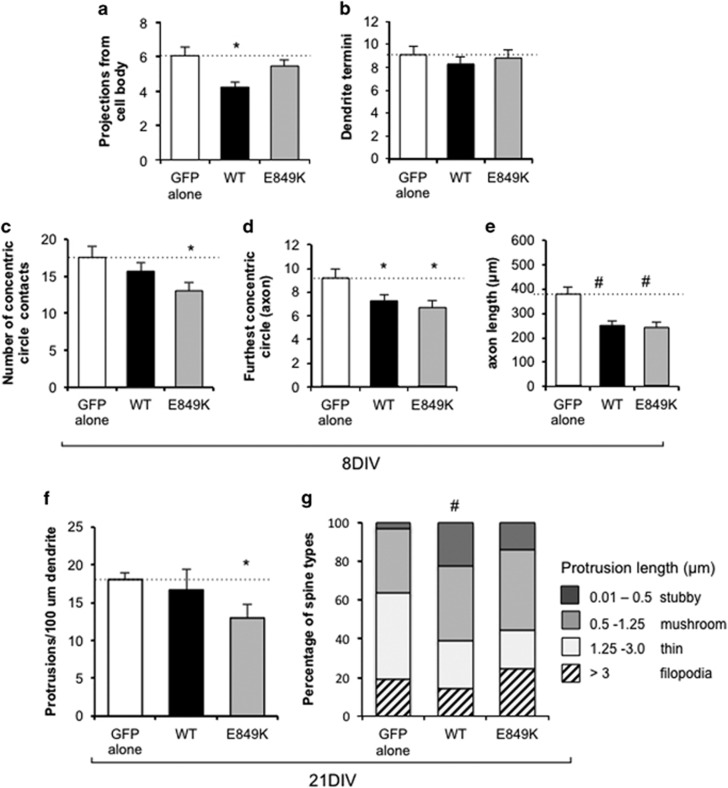Figure 4.
Dosage of IQSEC2 alters the morphology of developing neurons and increases the maturity of dendritic spines. Morphological measures examined after 8 days in culture (8DIV) include the number of projections from the cell body (a), number of dendrite termini (b), the number of times the neuron intercepted the concentric circles (c), the furthest concentric circle reached by the primary axon (d) and the length of the primary axon (e) for hippocampal neurons transfected with overexpression of IQSEC2 wild-type. At 21 days in culture (21DIV), the density of protrusions on dendrites in hippocampal neurons with overexpression of IQSEC2 (f) was measured. Control GFP alone (white bars), wild-type IQSEC2 (WT; black bars), IQSEC2E849K dominant-negative mutation (E849K; light gray bars). The percentage of the total protrusions at 21DIV were divided into categories of diminishing size, as indicated on the right hand side of the figure, with stubby spines (dark gray), mushroom spines (medium gray), thin spines (pale gray) and filopodia in hatched bars (g). Data represents mean+s.e.m. 8DIV neurons from GFP (n=22), WT-IQSEC2 (n=36) and IQSEC2E849K (n=22) for each group from three biological replicates. At 21DIV, the number of neurons/segments/protrusions (filopodia and spines) measured were from GFP (n=8/16/209), WT-IQSEC2 (n=6/10/91) and IQSEC2E849K (n=5/13/111). Significance *P<0.05 or #P<0.001 compared with GFP alone control. DIV, days in vitro; GFP, green fluorescent protein; IQSEC2, intelligence quotient motif and SEC7 domain containing protein 2 gene.

